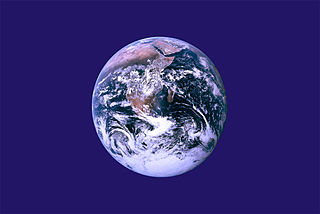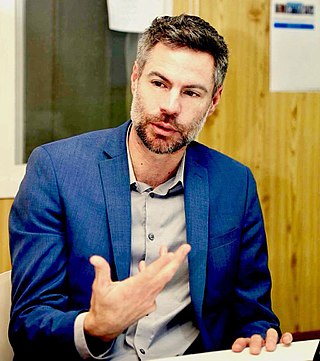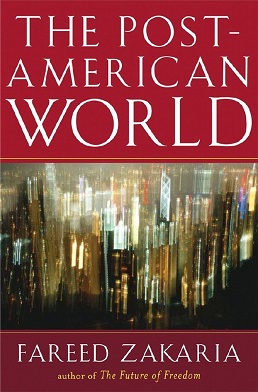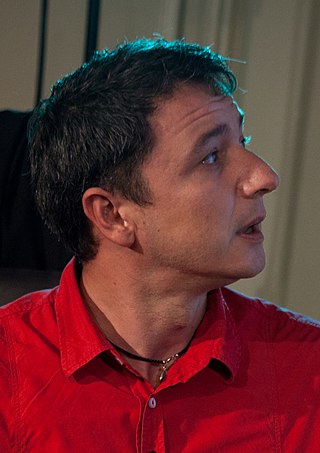
Natural Capitalism: Creating the Next Industrial Revolution is a 1999 book on environmental economics co-authored by Paul Hawken, Amory Lovins and Hunter Lovins. It has been translated into a dozen languages and was the subject of a Harvard Business Review summary.

The environmental movement, is a social movement that aims to protect the natural world from harmful environmental practices in order to create sustainable living. Environmentalists advocate the just and sustainable management of resources and stewardship of the environment through changes in public policy and individual behavior. In its recognition of humanity as a participant in ecosystems, the movement is centered on ecology, health, as well as human rights.

Silent Spring is an environmental science book by Rachel Carson. Published on September 27, 1962, the book documented the environmental harm caused by the indiscriminate use of a type of pesticide used by soldiers during WW2. Carson accused the chemical industry of spreading disinformation, and public officials of accepting the industry's marketing claims unquestioningly.

Earth Day is an annual event on April 22 to demonstrate support for environmental protection. First held on April 22, 1970, it now includes a wide range of events coordinated globally by Earthday.org including 1 billion people in more than 193 countries. The official theme for 2024 is "Planet vs. Plastics." 2025 will be the 55th anniversary of Earth Day.
The Earth immune system is a controversial proposal, claimed to be a consequence of the Gaia hypothesis. The Gaia hypothesis holds that the entire earth may be considered a single organism (Gaia). As a self-maintaining organism, Earth would have an immune system of some sort in order to maintain its health.

Stewart Brand is an American project developer and writer, best known as the co-founder and editor of the Whole Earth Catalog. He has founded a number of organizations, including the WELL, the Global Business Network, and the Long Now Foundation. He is the author of several books, most recently Whole Earth Discipline: An Ecopragmatist Manifesto.
The wise use movement in the United States is a loose-knit coalition of groups promoting the expansion of private property rights and reduction of government regulation of publicly held property. This includes advocacy of expanded use by commercial and public interests, seeking increased access to public lands, and often opposition to government intervention. Wise use proponents describe human use of the environment as "stewardship of the land, the water and the air" for the benefit of human beings. The wise use movement arose from opposition to the mainstream environmental movement, claiming it to be radical.

Gregg Edmund Easterbrook is an American writer and a contributing editor of both The New Republic and The Atlantic Monthly. He has authored ten books, and writes for op-ed pages, magazines, and journals.
Eco-capitalism, also known as environmental capitalism or (sometimes) green capitalism, is the view that capital exists in nature as "natural capital" on which all wealth depends. Therefore, governments should use market-based policy-instruments to resolve environmental problems.

Paul Gerard Hawken is an American environmentalist, entrepreneur, author, economist, and activist.

Environmentalism or environmental rights is a broad philosophy, ideology, and social movement about supporting life, habitats, and surroundings. While environmentalism focuses more on the environmental and nature-related aspects of green ideology and politics, ecologism combines the ideology of social ecology and environmentalism. Ecologism is more commonly used in continental European languages, while environmentalism is more commonly used in English but the words have slightly different connotations.
Regeneration refers to rethinking and reinventing business models, supply chains, and lifestyles to sustain and improve the earth's natural environment and avoid the depletion of natural resources. Regeneration includes widespread environmental practices such as reusing, recycling, restoring, and the use of renewable resources.

Michael D. Shellenberger is an American author and journalist who writes about politics, the environment, climate change, and nuclear power. In his book San Fransicko, Shellenberger makes the argument that progressivism is linked to homelessness, drug addiction, and mental illness. He is a co-founder of the Breakthrough Institute and the California Peace Coalition. Shellenberger founded the pro-nuclear non-profit Environmental Progress in 2016. As of November 2023, Shellenberger is the CBR Chair of Politics, Censorship and Free Speech at the University of Austin.

Mother of the Forest was a giant sequoia in the Sierra Nevada that was stripped of its bark and used as an exhibition tree. Discovered in 1852 by Augustus T. Dowd, it was the second largest tree in Calaveras Grove, standing at 328 feet tall with a circumference of 93 feet. During the California Gold Rush, its bark was harvested and exhibited in New York and London. However, the remaining tree was eventually destroyed by fire in 1908, leaving only a fire-blackened snag.

The Post-American World is a non-fiction book by American journalist Fareed Zakaria. It was published in hardcover and audiobook formats in early May 2008 and became available in paperback in early May 2009; the Updated and Expanded Release 2.0 followed in 2011. In the book, Zakaria argues that, thanks to the actions of the United States in spreading liberal democracy across the world, other countries are now competing with the US in terms of economic, industrial, and cultural power. While the US continues to dominate in terms of political-military power, other countries such as China and India are becoming global players in many fields.

Wiser.org, formerly WiserEarth.org, was a user-generated online community space for the social and environmental movement. As one of the social networks for environmental sustainability and social change, Wiser.org was the primary initiative of the non-profit organization WiserEarth, which tracks the work of non-profits around the world. The site mapped and connected non-governmental organizations (NGOs), businesses, governments, groups, and individuals addressing global issues such as climate change, poverty, the environment, peace, water, hunger, social justice, conservation, human rights, and more.

Break Through: From the Death of Environmentalism to the Politics of Possibility, first published in October 2007, is a book written by Ted Nordhaus and Michael Shellenberger, both long-time environmental strategists. Break Through is an argument for a positive, "post-environmental" politics that abandons the traditional environmentalist focus on nature protection for a focus on creating a new sustainable economy.

Dario Tamburrano is an Italian environmental activist and one of the first members of the Five Star Movement elected in the European Parliament.

Why We Sleep: The New Science of Sleep and Dreams is a 2017 popular science book about sleep written by Matthew Walker, an English scientist and the director of the Center for Human Sleep Science at the University of California, Berkeley, who specializes in neuroscience and psychology. In the book, Walker discusses about the importance of sleeping, the side effects of failing to do so and its impact on society.

Drawdown: The Most Comprehensive Plan Ever Proposed to Reverse Global Warming is a 2017 book created, written, and edited by Paul Hawken about climate change mitigation. Other writers include Katharine Wilkinson, and the foreword was written by Tom Steyer and (paperback) Prince Charles.
















